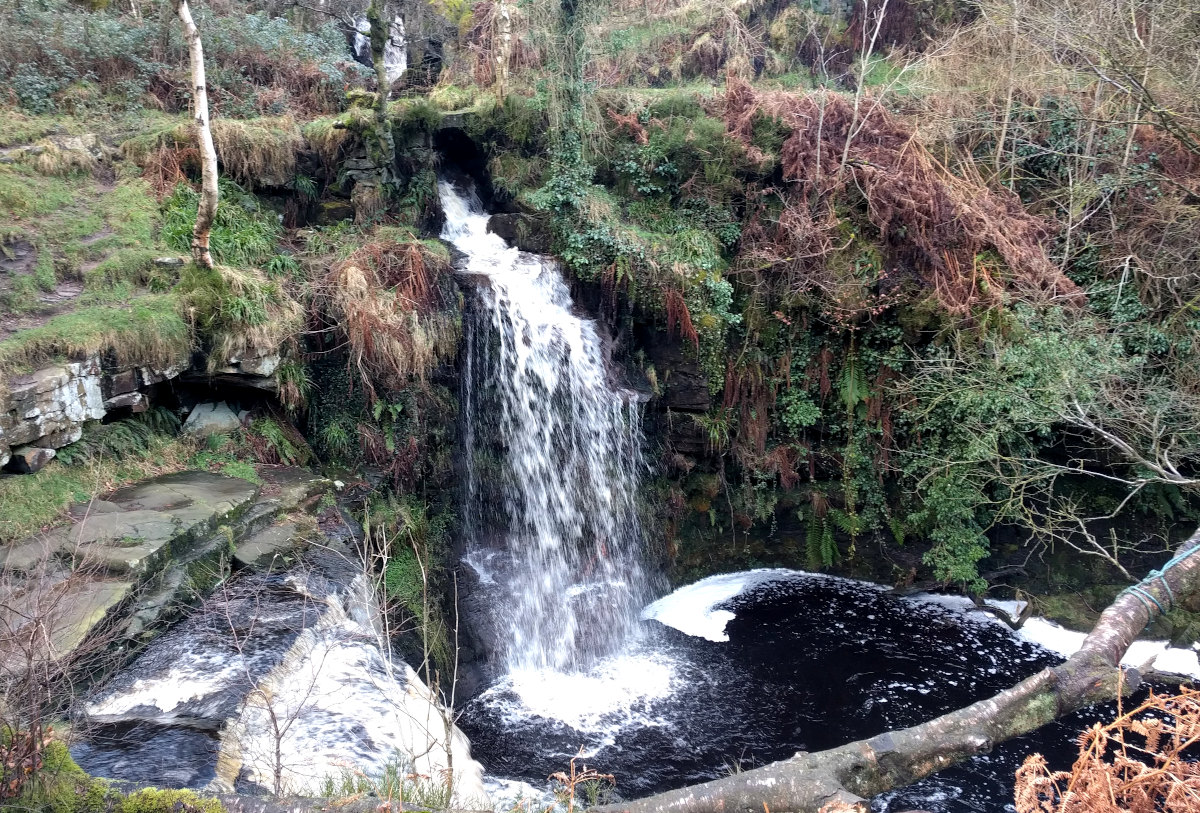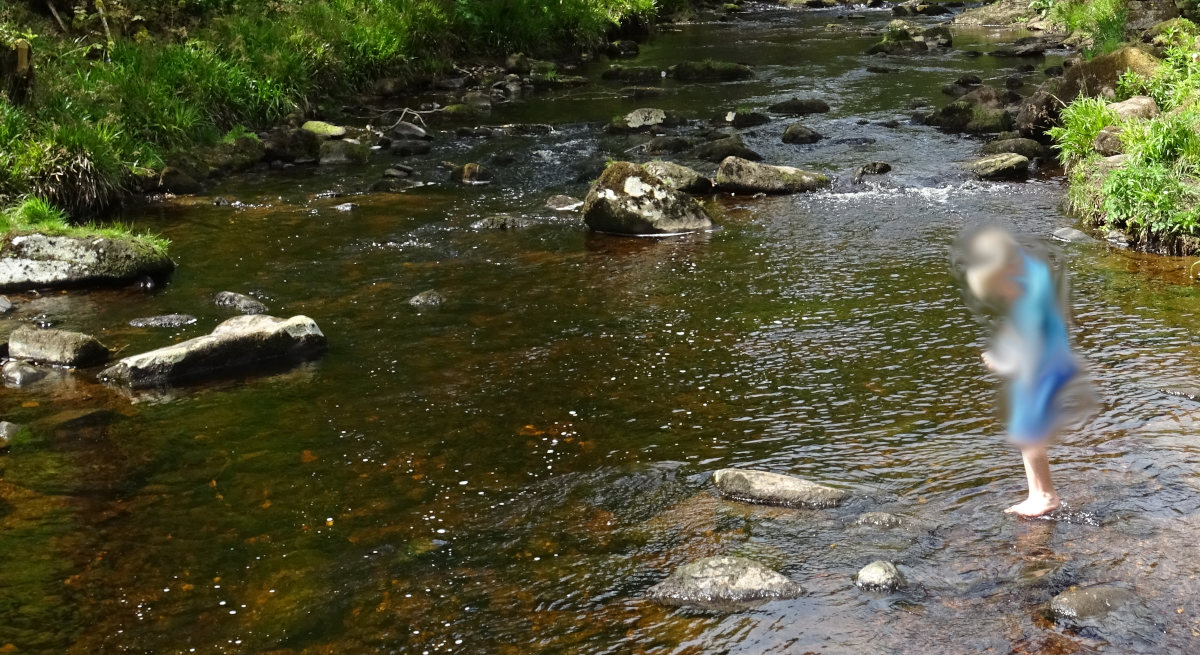Swimming and paddling at Hardcastle Crags

If you swim or paddle at Hardcastle Crags it is at your own risk.
Wild swimming is the practice of swimming in natural bodies of water, such as rivers, lakes, and the sea. It is a growing trend in the UK, with many people enjoying the benefits of swimming in nature.
There is only one location in Hardcastle Crags where the water is deep enough to swim and that is at Lumb Falls. None of the mill ponds or stretches of the river are suitable for swimming.
The National trust frowns on wild swimming and paddling on its land and it is not allowed. If it were sanctioned by the NT, they would need to ensure it was safe and provide life rings, signage and water quality testing.
Below: The plunge pool below Lumb falls.

If you swim or paddle at Hardcastle Crags it is at your own risk.
At the Crags the Trust has pretty much washed it hands of anything to do with the river and the stones have been taped off with warning notices for several months.
Below: Paddling in Hebden water in the Summer.

There are many benefits to wild swimming and playing outdoors, including:
- Improved mental health: Wild swimming can help to reduce stress, anxiety, and depression.
- Improved physical health: Wild swimming can help to improve cardiovascular health, muscle strength, and flexibility.
- Increased fitness: Wild swimming can help to increase fitness levels and improve endurance.
- Weight loss: Wild swimming can help to burn calories and lose weight.
- Improved sleep: Wild swimming can help to improve sleep quality and duration.
If you are considering trying wild swimming, there are a few things you should keep in mind:
- Check the weather forecast: Wild swimming is best done in warm weather.
- Choose a safe location: Choose a swimming spot that is free from hazards, such as strong currents or underwater obstacles.
- Tell someone where you are going: Tell a friend or family member where you are going and when you expect to be back.
- Wear appropriate clothing: Wear a swimsuit that is comfortable and appropriate for the weather.
- Bring a towel: Bring a towel to dry off after your swim.
- Be aware of the risks: Wild swimming can be dangerous, so it is important to be aware of the risks and take precautions.
If you are new to wild swimming, it is a good idea to start with a short swim in a calm, shallow body of water. As you become more experienced, you can gradually increase the distance and difficulty of your swims.
Wild swimming is a great way to get exercise, enjoy the outdoors, and improve your health. If you are looking for a new way to get fit and have fun, wild swimming is a great option.
